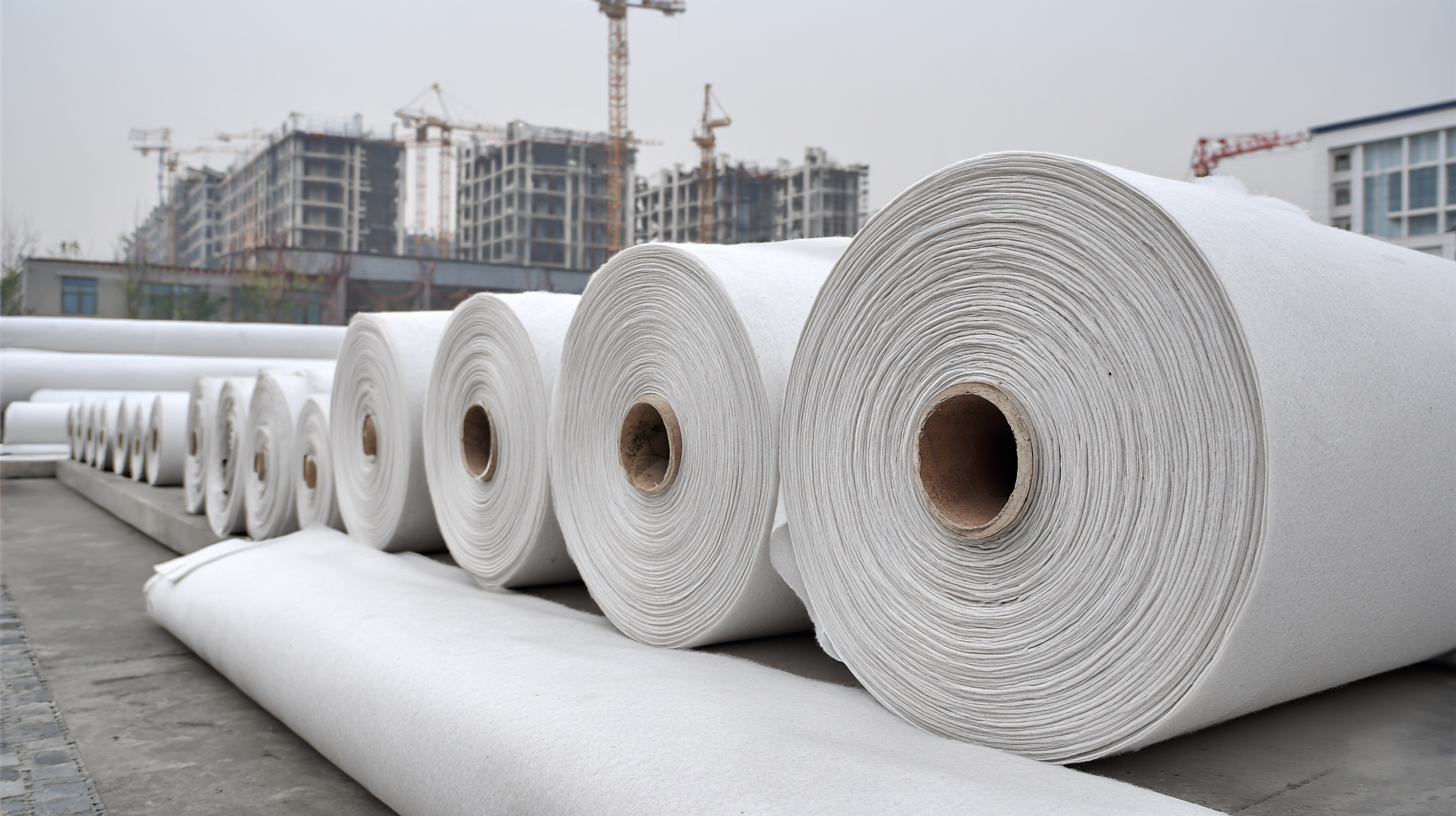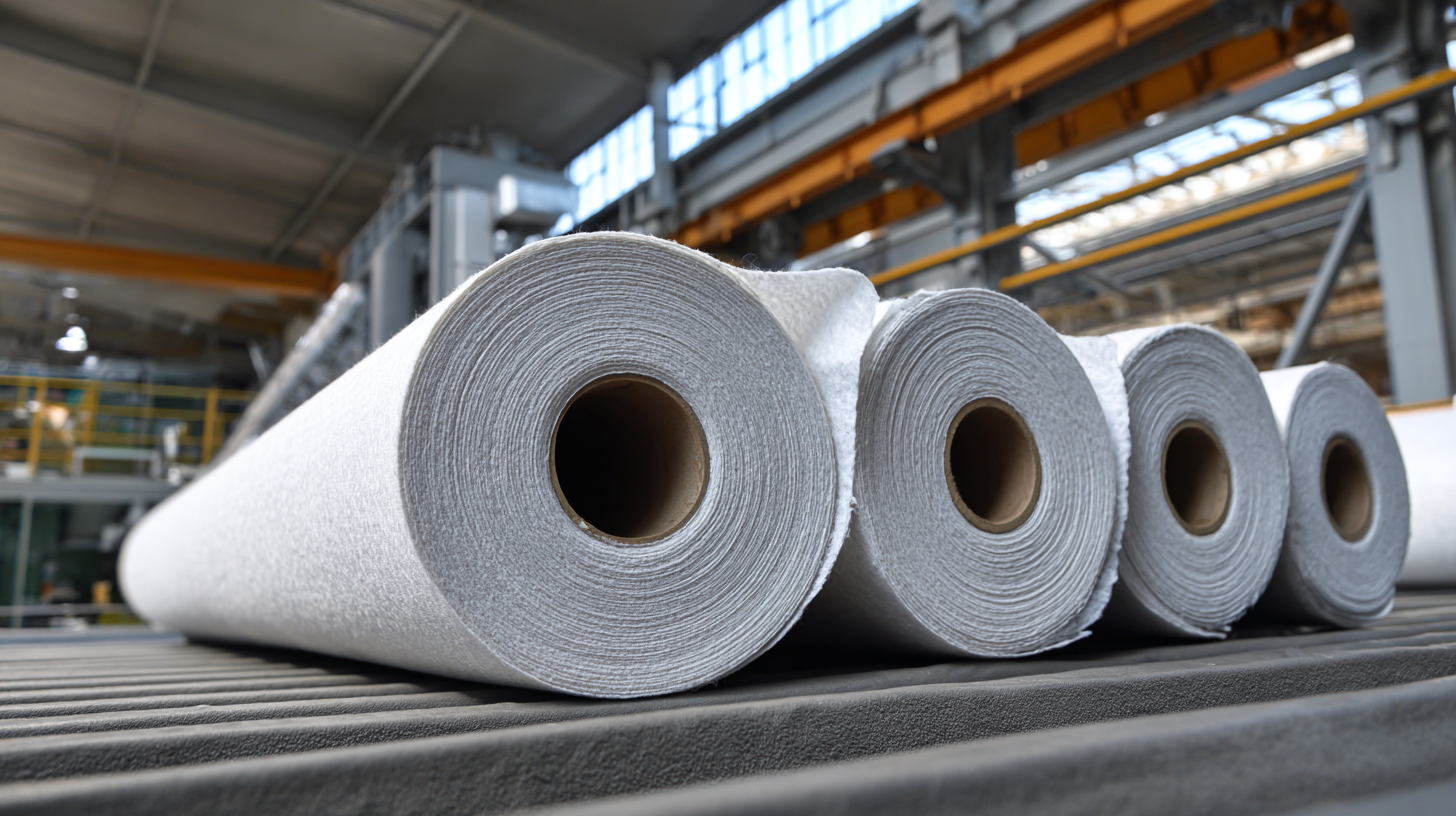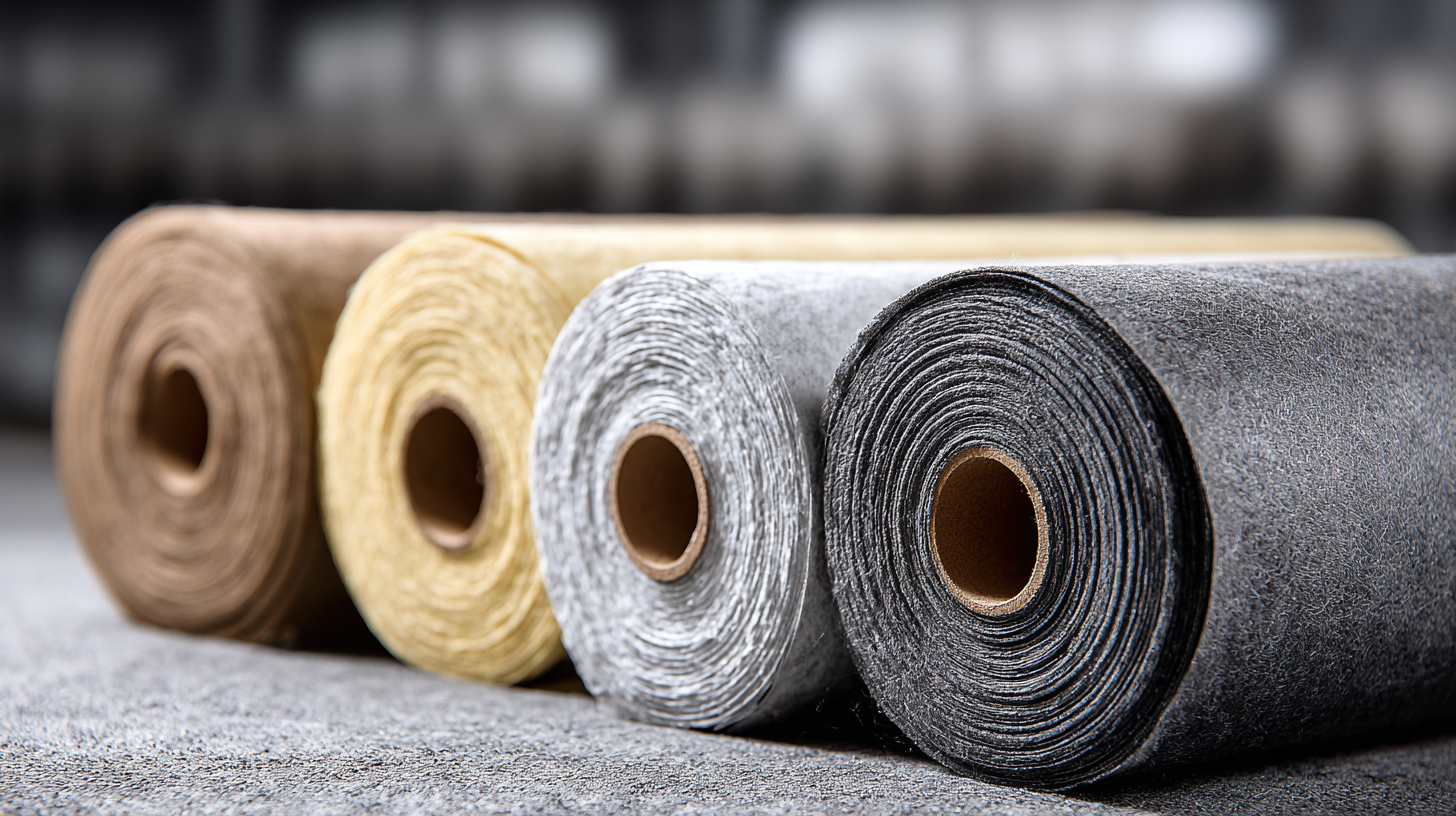Inquiry
Form loading...
- Phone
- E-mail
In the realm of civil engineering and construction, selecting the right materials is crucial for the success of any project. Among these materials, PP Geotextile has emerged as a significant player, offering a unique blend of durability and versatility that can cater to a variety of applications.

Understanding industry production standards is essential to ensure that the chosen PP Geotextile meets the specific requirements of your project. Whether you're involved in road construction, erosion control, or drainage solutions, knowing how to evaluate the quality and functionality of PP Geotextile will greatly impact the effectiveness and sustainability of your work.
In this blog, we will explore key factors to consider when selecting the best PP Geotextile for your needs, empowering you to make informed decisions that will lead to successful project outcomes.
When selecting the best polypropylene (PP) geotextile for your project, understanding the key considerations is essential to ensure durability and efficiency. One primary factor to evaluate is the material's permeability, which affects drainage and stability in soil applications. The right PP geotextile should allow water to flow through while preventing soil erosion, making it crucial for applications such as road construction, erosion control, and environmental protection.
Another important consideration is the tensile strength and puncture resistance of the geotextile. Depending on the specific requirements of your project, choosing a geotextile that can withstand high loads and resist physical damage during installation is vital. Additionally, familiarity with industry production standards can guide your selection process, ensuring compliance with regulations and performance expectations. By assessing these factors, you can choose a PP geotextile that not only meets your project’s requirements but also enhances its overall success.
| Property | Standard Value | Importance |
|---|---|---|
| Grab Tensile Strength | ≥ 20 kN/m | High |
| Permittivity | > 1.5 sec-1 | Medium |
| UV Resistance | ≥ 70% | High |
| Water Flow Rate | > 100 liters/min/m2 | High |
| Puncture Resistance | ≥ 0.5 kN | Medium |
| Thickness | ≥ 2.0 mm | Low |
Understanding the various types of polypropylene (PP) geotextiles is essential for selecting the most suitable product for your project. Among the most widely used types is
spunbond PP nonwoven fabric, which is valued for its durability and versatility in applications ranging from civil engineering to agricultural solutions.
Additionally, meltblown PP nonwovens, which offer excellent filtration properties, are crucial in medical and hygiene applications.
In the broader context of the polypropylene market, recent industry reports indicate a significant growth trajectory. The global PP market was valued at approximately
$85.58 billion in 2023 and is projected to reach around
$122.77 billion by 2031, with a compound annual growth rate (CAGR) of 4.64%. This growth can be attributed to the increasing demand in emerging economies and the rising urbanization rates, which further bolster the need for effective geotechnical solutions.
Understanding these market dynamics and product capabilities will aid in making informed decisions for your geotextile needs.
When selecting PP geotextiles for your project, evaluating their quality and durability is paramount. High-quality geotextiles should have a robust construction that can withstand environmental stresses. Look for products that offer UV resistance, as exposure to sunlight can degrade materials over time. Additionally, consider the tensile strength and elongation properties, which are crucial for ensuring the geotextile performs well under load and maintains its integrity.
**Tip:** Always check for certifications from recognized quality standards. This will give you peace of mind that the materials meet industry benchmarks for durability and performance.
Another key aspect to consider is the permeability of the geotextile. A durable PP geotextile should allow for efficient water flow while preventing soil erosion. Testing for pore size distribution can help determine how well the material manages fluid movement and soil particles.
**Tip:** Conduct a site assessment to understand the specific environmental conditions your geotextile will face. This knowledge can guide you in choosing materials tailored for your project's unique requirements.

When selecting polypropylene (PP) geotextiles for your project, compliance with industry production standards is paramount. According to the Geosynthetic Materials Association (GMA), geotextiles must meet stringent criteria, including physical, hydraulic, and mechanical properties to ensure optimal performance in soil and erosion control applications. These criteria are often outlined in industry standards such as ASTM D4759, which specifies the testing methodologies for geotextiles, ensuring they withstand various environmental conditions over their intended lifespan.
Furthermore, recent studies indicate that adherence to these standards can significantly enhance the longevity and effectiveness of geotextiles. For instance, a report by the International Geosynthetics Society found that geotextiles meeting ASTM standards demonstrated up to 30% greater durability when exposed to UV radiation and aggressive soil chemicals compared to non-compliant materials. Additionally, compliance can improve site stability and reduce maintenance costs, making it a critical consideration for engineers and project managers looking to maximize their project’s success while adhering to budget and performance requirements.

When it comes to selecting the best PP geotextile for your project, conducting a cost-benefit analysis is crucial. This investment not only affects the immediate budget but also influences the long-term success of your project. High-quality geotextiles can enhance soil stabilization, reduce erosion, and improve overall site performance. Although premium products may have a higher upfront cost, their durability and effectiveness often lead to significant savings in maintenance and replacement expenses over time.
Tips for choosing the right PP geotextile include evaluating the product specifications and performance characteristics based on your project requirements. Look for geotextiles with excellent tensile strength and filtration properties to ensure they can withstand environmental stresses and prevent soil loss. Additionally, consider the environmental impact of the materials used, as sustainable options can further improve the project’s overall value.
Another vital tip is to take into account the manufacturer’s reputation and the product warranty. A reliable manufacturer should provide comprehensive support and assurance about their geotextile products, which can protect your investment. Don’t hesitate to request samples or case studies that demonstrate the performance of the geotextile in similar applications. By making informed decisions based on these factors, you can secure the best PP geotextile that aligns with your project's goals.
